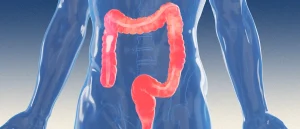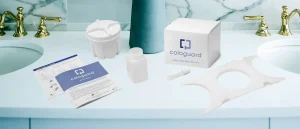Can a TENS Unit Help Treat ED? You Might Want to Think Twice Before Electrocuting Your Penis
If you’ve struggled with post-workout back pain or arthritis flare-ups, you may have already invested in your own TENS unit—a device that sends pulses to your nerves through sticky, electrode pads—to relieve some discomfort. But some guys are using this handy machine one way you probably haven’t heard of: to treat erectile dysfunction.
Research is still limited on using a TENS unit as a first strategy against ED, but a couple of clinical trials show promise.
A 2020 study that compared aerobic exercise and electrical stimulation found that the latter was a more effective treatment for otherwise healthy men (1). Participants were provided with a TENS unit electrode pad that fit around the base of their penis, which was activated for 30 minutes a week for six weeks.
A gentle shock from a TENS unit might be most effective in treating certain types of ED. A study in the Journal of Spinal Cord Medicine found that electrode stimulation on the perineum (aka the taint) effectively induced erections in guys that struggled with neurogenic erectile dysfunction—a kind of ED that is caused by an impaired nervous system (2).
Between 28 participants with no reported health issues and 18 guys with neurogenic ED from spinal cord injuries, both groups had improved erections—but the latter experienced the most noticeable benefits.
If you’re struggling with ED, you should chat with your doc first to rule out any other health conditions that could be causing your symptoms. But If you’ve got the go-ahead, here’s how to safely place a TENS unit to stimulate your pelvic floor muscles, which may improve your erections.
Should You Place the TENS Unit on Your Penis?
While there’s some eyebrow-raising guidance that you should place the electrodes directly onto your genitals, the sensitive skin on your penis might not take kindly to the adhesive or higher-strength electric pulses.
Instead, target your pelvic floor muscles, writes Jonathan Lazare, MD, a board-certified urologist in a blog post.
These muscles support everything from urination frequency to neighboring back and abdominal muscles, and in men, healthy ejaculation and stronger erections, according to the Cleveland Clinic.
Both weakened and overactive pelvic floor muscles are common causes of ED because of their role in maintaining blood flow to the penis. A weak pelvic floor can make it hard to keep an erection because the muscles aren’t properly contracting to prevent the outflow of blood.
To stimulate your pelvic floor, place one electrode over your sacrum (the bone at the end of your spine, right above your buttcrack) and one right above your pubic bone—if you have pubic hair, you’ll probably want to shave before doing so.
Then start at the lowest pulse setting and work your way up to a level you can tolerate comfortably.
Better Options for ED Treatment
The jury is still out on the effectiveness of this treatment, and you’ll be hard-pressed to find a urologist that will recommend a TENS unit to treat ED right out the gate. Luckily, there are a ton of heavily researched and science-backed treatments for erectile dysfunction like TRT and PDE5 inhibitors like Viagra.
Talking to a doctor can help you get to the bottom of why you’re having trouble getting—and staying—hard.
Hone’s testosterone assessment is the simplest way to uncover whether your levels are low. It’s fast, simple, and you can do it from home. And if low T is the problem, Hone can help you get you back on top of your game.
References
- Rislanu, et al (2020). Comparative Effectiveness of Electrical Stimulation and Aerobic Exercise in the Management of Erectile Dysfunction: A Randomized Clinical Trial.
- Shafik, et al (2008). Percutaneous Perineal Electrostimulation Induces Erection: Clinical Significance in Patients With Spinal Cord Injury and Erectile Dysfunction.













